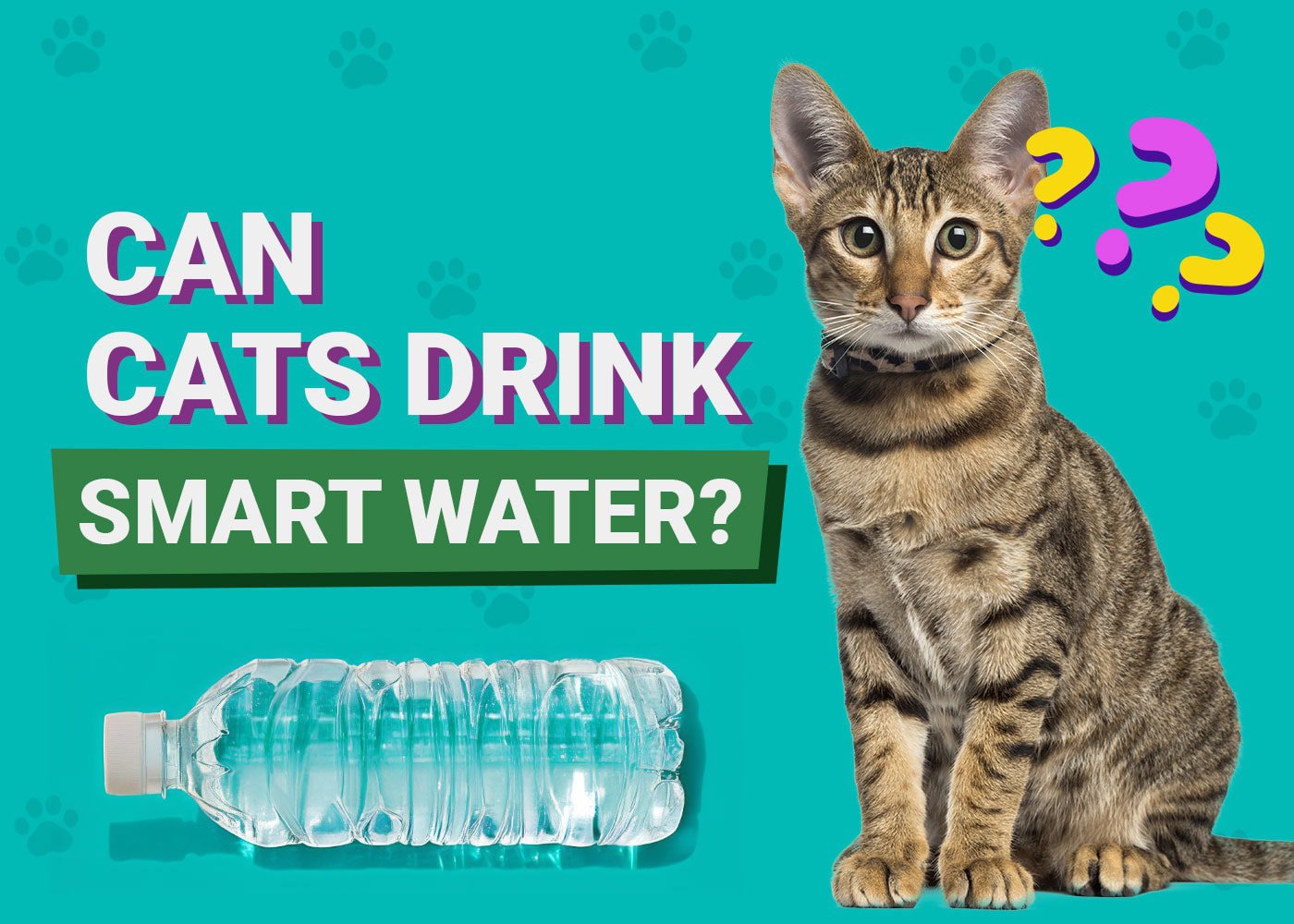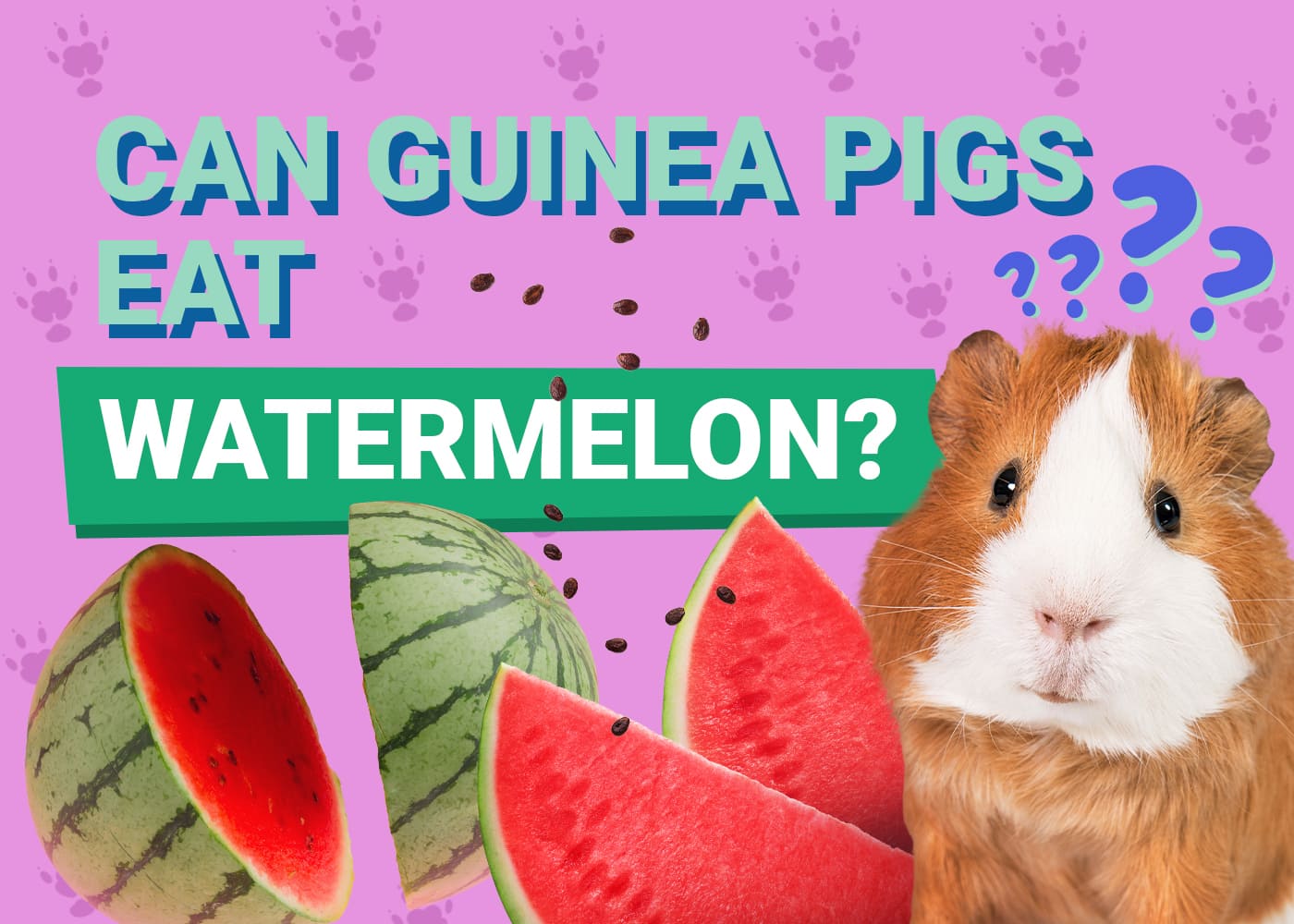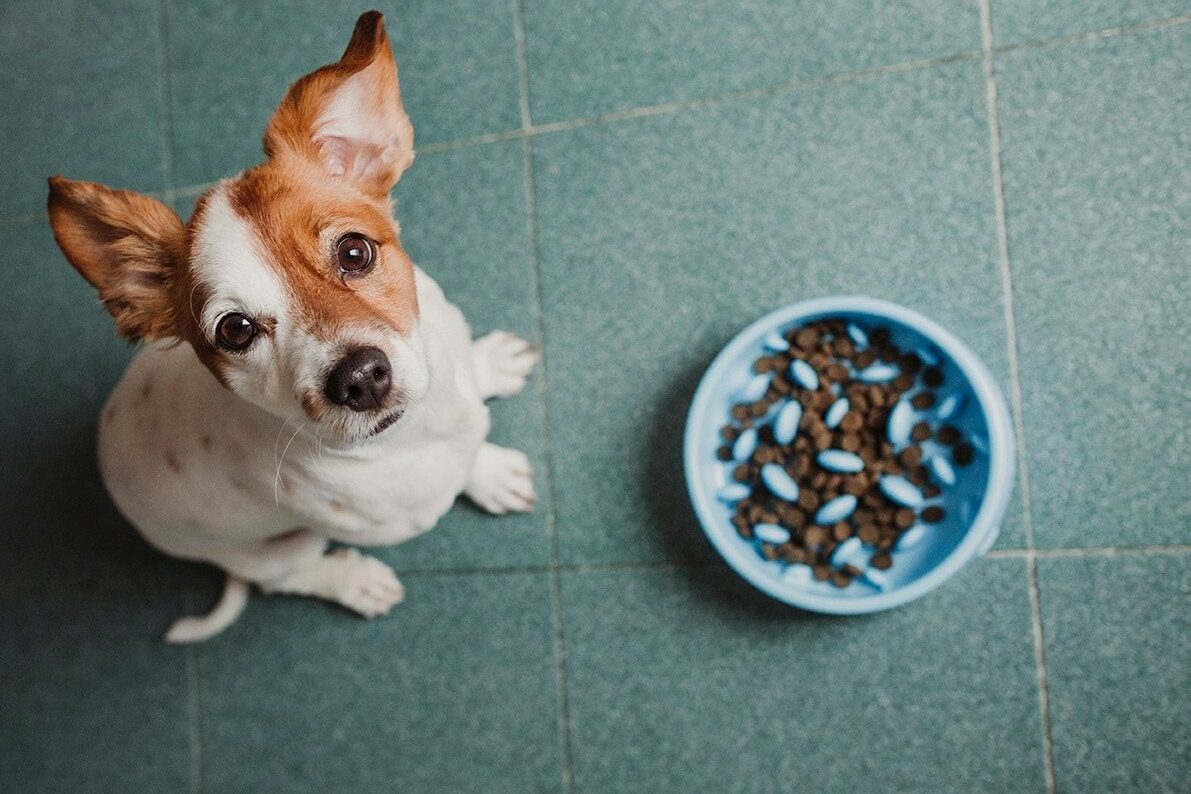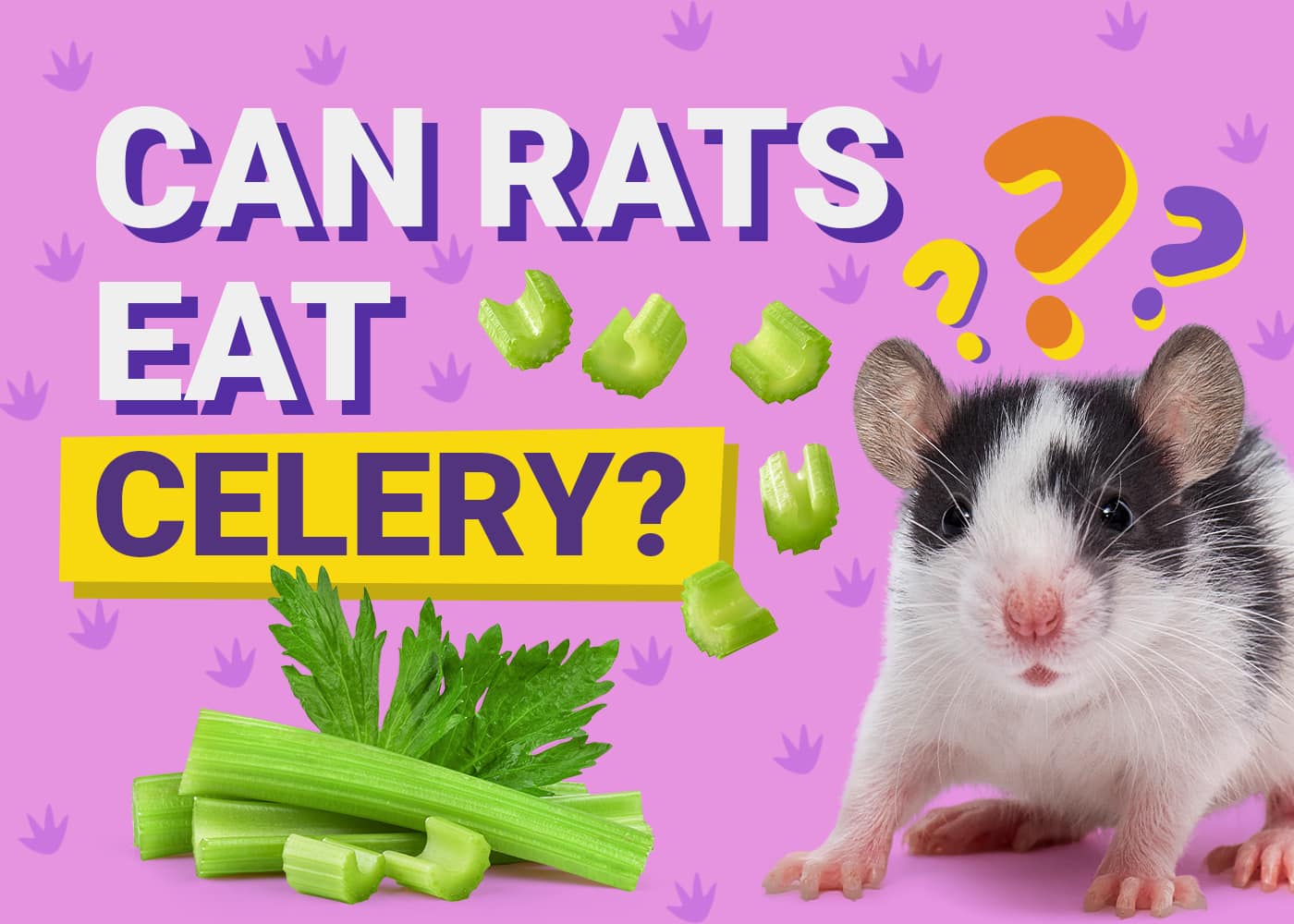VET APPROVED

The information is current and up-to-date in accordance with the latest veterinarian research.
Learn more »Click to Skip Ahead
Water is the most essential nutrient on earth, which all living creatures need to survive. That includes cats, of course, and sometimes it seems that cats don’t drink as much water as they should. To help them stay hydrated and healthy, some owners give their feline friends Smart Water, a bottled water produced by Coca-Cola.
The question is, can cats safely drink Smart Water? Yes, Smart Water is safe to give to your cat. It contains no artificial flavors, colors, or sodium, but it has the electrolytes calcium chloride (CaCl2), magnesium chloride (MgCl2), and potassium Bicarbonate (KHCO3).

What Is Smart Water?
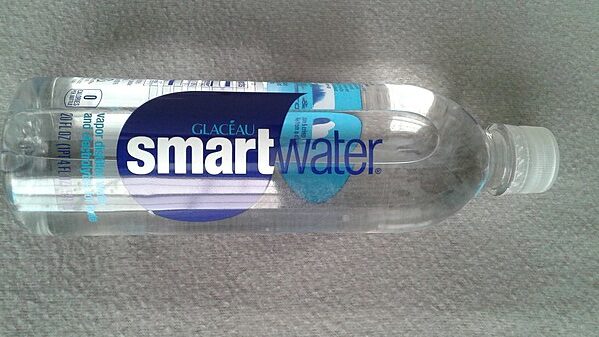
Smart Water is a brand of bottled water that has been cleverly marketed by the Coca-Cola company as a healthier, tastier, smarter bottled water. It is vapor-distilled, which means that the water is heated past its boiling point (vaporized), which removes virtually all impurities and minerals.
Regular bottled water, like Evian, has been boiled to remove bacteria or particulates but retains naturally occurring electrolytes and minerals, such as magnesium, potassium, calcium, and bicarbonates.
Through the process of distillation, Smart Water removes all of these as well, leaving pure H2O. Distilled water is not recommended for human consumption, not because it isn’t safe but because it lacks nutritional value. What makes Smart Water smart is that it puts some of the electrolytes back in, making it more palatable and fit for human consumption.
Are All Types of Smart Water Safe For Cats?
There are a few varieties of Smart Water available:
- Smart Water Flavor: This is the same as the original, but with natural flavors added. It does not contain sugar or artificial sweeteners, just natural fruit flavor additives.
- Smart Water Antioxidant: This formula includes selenium, a mineral that helps boost immune function. Cats are tolerant to high selenium levels, and the levels in Smart Water have no adverse effects on them.
- Smart Water Alkaline Antioxidant: This has slightly higher Selenium levels and has been through an ionization process to raise its pH from 7.0 (neutral) to 9.5. A pH range of 6.5 to 9.5 is generally accepted as a safe level for drinking water, and there is no convincing evidence to suggest that more alkaline water has any significant health benefits. It is also not harmful and has not been found to have any adverse effects on humans or cats.
All variations of Smart Water currently on the market are safe for cats to consume.
Should I Give My Cat Smart Water?
You certainly can give your cat Smart Water, but there is no need for them to have it unless your water quality is a real problem. Even in this situation, there are several ways to ensure your cat is drinking clean water without spending $2 a liter.
Some cats might enjoy the taste of Smart Water, even the flavored varieties, but they don’t need it.

What Type of Water Is Best for Cats?
Tap water is the best option for your cat, you, and the environment. Unless there is specific contamination or palatability issues with your tap water, if it is fit for human consumption, it is healthy for your cat.
Your tap water will be hard or soft, depending on where you live.
- Hard water contains higher levels of calcium, magnesium, and iron and lower levels of sodium
- Soft water contains much lower levels of the previous minerals and has a higher sodium content.
Some houses install water softeners, which essentially exchange calcium, magnesium, and iron for sodium. Soft water tends to taste better, leaves less limescale, and is less damaging to clothes and hair. It is also less nutritious. Both hard and soft water are safe for cats.
Concerns have been raised about the higher mineral levels in hard water impacting the development of urine crystals in cats, but there is no scientific data or evidence to support this.
Why Is It Important That Your Cat Drinks Enough Water?
You’ve likely heard the term “stay hydrated.” That goes for cats as well. Water aids in digestion, keeps joints lubricated, flushes toxins from the system, keeps blood flowing, and circulates oxygen. Without water, animals cannot survive.
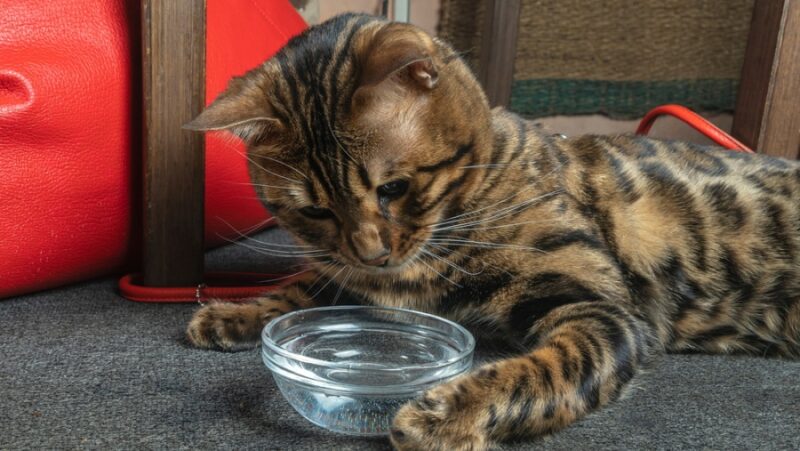
What Are the Signs of Dehydration in Cats?
If your cat is moderately to severely dehydrated, you’ll notice these signs:
- Dry mucous membranes (gums, tongue)
- Lethargy
- Loss of appetite
- Weakness
- Sunken eyes
- Elevated heart rate
- Skin tenting (their skin loses its elasticity)
If your cat shows any of these signs, contact your vet immediately. Dehydration can occur within 24 hours of a cat not drinking, but it can also occur with conditions like kidney disease and diabetes. Prolonged dehydration can result in organ damage or death.
Why Do Cats Become Dehydrated?
Cats can become dehydrated for several reasons, both internal and external.
- Weather – Hot, dry, and windy conditions increase water loss.
- Activity – More active cats need more water than sedentary ones.
- Gastrointestinal disease – Cats can become very dehydrated if they cannot replace fluid lost through vomiting or diarrhea.
- Health conditions – Kidney disease, diabetes, and hyperthyroidism can all affect a cat’s water needs and loss.
- Diet – Cats that eat dry food need to drink more water than cats on a wet food diet, so they can become dehydrated more rapidly if they do not have access to water.
- They don’t like the taste, position, or container their water is in.
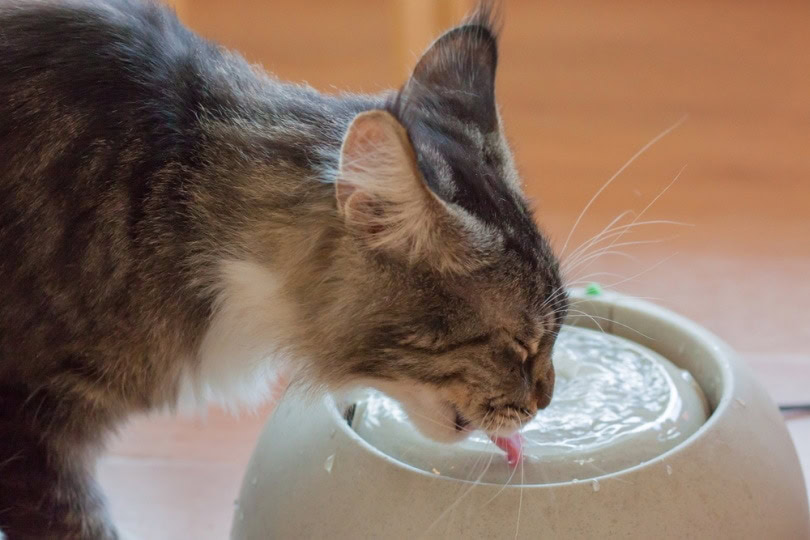
How Can You Persuade Your Cat to Drink More Water?
1. Get Your Cat a Water Fountain
For a cat, flowing water seems fresher and cleaner. A water fountain also adds an element of interest, which attracts your cat back more often.
2. Location, Location
Cats like to be able to let their guard down when they drink, so make sure you place their bowl in an area that’s out of the way but where they can still keep an eye on their surroundings. Position the water bowl away from their food and litter box to avoid the risk of contamination.
3. Get The Right Bowl
This might take a bit of trial and error, but the types most favored by cats are wide bowls (to stop their whiskers hitting the sides) that are ceramic or stainless steel. These materials keep the water cooler and taste better than plastic. Having a few bowls is also a good idea.
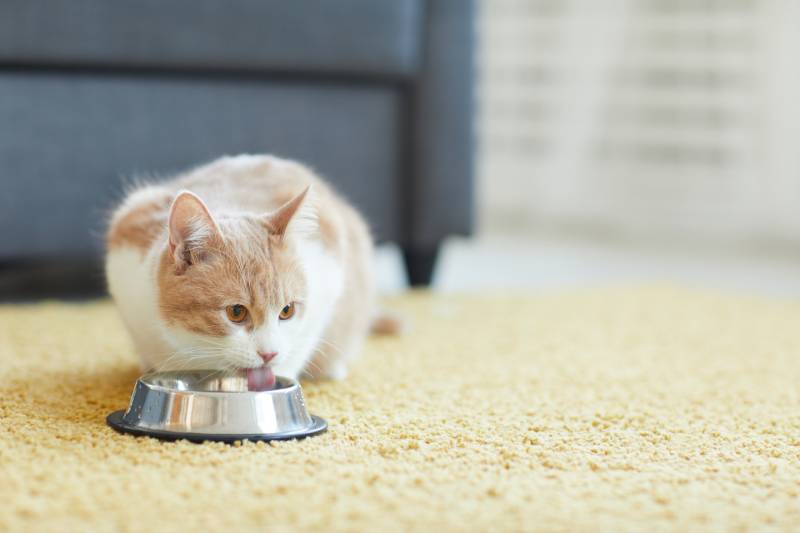
4. Filter the water
If you have hard water or the tap water just doesn’t taste great, try offering your cat filtered water. Most fountains have filters, which is another reason they are an excellent option for keeping your kitty hydrated.
5. Keep it Cool and Fresh
Remember to replace your cat’s water at least once daily and more often in warm weather. If it’s a hot day, use refrigerated water or pop in some ice cubes.
6. Offer Wet Food
If your cat is on a dry food diet, add some wet food to the mix to boost their hydration. Most wet foods are 70%–80% water.
7. Talk to Your Veterinarian
If you’ve optimized your cat’s drinking situation and you’re still worried they are not getting enough water, a trip to your veterinarian might be warranted. They can tell you if the issue goes deeper than your cat simply not wanting to drink.


Final Thoughts
Water is essential, and dehydration can be fatal, so ensuring our feline companions drink enough water is an important part of caring for them. There are many ways for us to encourage them to drink more, and there is no harm in offering your cat Smart Water, but it is an expensive option. Our tips will ensure that you make drinking water as appealing as possible for your cat.
If you are worried that your cat is still drinking too little, is dehydrated, or is drinking too much, it is vital to take them to the vet for a health check.
See also:
- Can Cats Drink Salt Water? Vet-Approved Risks, Care Tips, & FAQ
- Can Cats Drink Mineral Water? Vet-Reviewed Health Facts
Featured Image Credit: Smartwater bottle (Benjamin Ikuta, Wikimedia Commons CC BY-SA 4.0)
